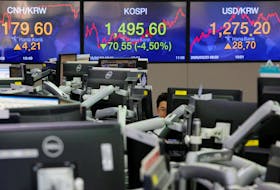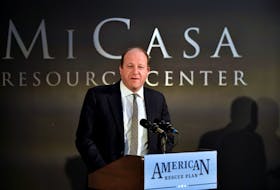The stratospheric prices some antique and classic cars have fetched at auction – and their rapidly-rising appreciation over the past decade – has led some analysts to speak out about them as solid investments which have in the past few years sometimes outperformed other collectibles.
Patrice Collette, an equity analyst with Capital Group, describes the skyrocketing prices in the antique car segment on the company’s website, referring to the 2015 sale of 25 Lamborghinis, Ferraris and Bugattis for US$67 million in California only three years ago. A 1964 Ferrari 250 LM was auctioned off for US$17.6 million.
“Over the past decade, appreciation in the value of classic cars has handily surpassed that of art, wine and coins, all of which notched considerable gains themselves,” writes Collette.
Even so, Collette also warns in that article that the rapid appreciation of antique and classic car prices might be a thing of the past.
“Frankly, I worry that we are nearing the top of the market and that newcomers who view cars solely as investments could be disappointed,” he writes.
Antique car industry insiders agree.
“This is a bubble,” said David Grainger, whose Ontario-based company, The Guild of Automotive Restorers, has been restoring antique cars for years. “Car investment is luck. To predict what will happen to a market is beyond the ability of the average investor.”
There have, of course, been huge gains for the lucky few. A 1974 Porsche Carrera has sold for $1 million at auction. But Grainger notes that more than 1,600 of these cars were built and he figures it is very unlikely those kinds of gains will be realized again anytime soon.
“Those days are gone. The investment potential of these cars has now outstripped most people’s ability to pay for them,” he said.
“It would be a fool’s errand to buy one of those cars and expect that what happened in the last 10 years would happen again over the next decade.”
As Baby Boomers age, their purchasing power is being replaced by younger adults who do not share in the love affair their parents – and grandparents – had for cars, said Grainger.
“There are kids now in their twenties and thirties who have never bothered to get a driver’s licence because it’s not their passion,” he said. “The era of the car is starting to fade. Cars are going to go away.”
There are still many aficionados of these beautiful machines from what is now considered to have been the golden age of the automobile, from the 1920s through to the 1950s.
In Nova Scotia, Jeff Lee has loved these cars since the mid-1970s and has collected a few of them himself. But he is adamant that the vast majority of car collectors are not into it as an investment, a way to diversify their portfolio.
“For 99.999 per cent of the collector car owners/restorers/collectors, this is something that they do because they are interested in one form or another of collector cars,” said Lee. “Most owners will spend more over the ownership period to purchase, restore, maintain, store, and insure … than will ever be returned upon its sale.”
Even if an investor does manage to buy a car likely to appreciate in value over the years, it’s often necessary to restore it to mint condition. And that’s costly and time-consuming.
According to Grainger, it often takes about 1,500 hours, or about nine months, for car restoration experts to fix up an antique car and return that baby to its proud owner.
“The average restoration is now $150,000 to $250,000,” said Grainger. “It doesn’t matter if it’s a 1970 Chev or something more exotic.”
The biggest challenge facing anyone looking to invest in antique cars is knowing which car to buy and correctly anticipating future trends of what has already been shown to be a very fickle market.
“Only a very rarefied few actually buy and sell cars at an actual profit, and to do so usually means that some corners were cut somewhere, or someone was taken advantage of,” said Lee. “The collector car market continually evolves just like the rest of the collectibles market. What is hot today is old news tomorrow.
“Over the years, there have been several boom-and-bust cycles and as many or more people have lost money in the high-end collector market than those who come out ahead,” he said.
Those losses, though, are often easily absorbed by the super-rich who tend to be those most involved in scooping up antique cars for investment purposes.
“Some of them are stuck with these cars but if you’ve spent $1 million on a car … you’ve probably got $60 million in the bank,” said Grainger. “It’s not particularly punitive.”
The best way to invest in antique cars seems to be to take a pass on anything made in large quantities and stay with custom-built cars.
“I wouldn’t invest in Porsches or anything that was made in quantities of more than one or two,” said Grainger. “I would concentrate on cars that people look at with wonder and want to sit in.”
Captivating cars
David Grainger has seen and driven some of the most amazing vehicles on the planet
Barrelling down the highway in a powerful, 1929 Bentley Le Mans at 85 miles per hour – well over the speed limit – David Grainger used to secretly hope the police would give him a ticket.
He wanted evidence his Bentley, with its jaw-dropping 4.5-litre engine had really moved that fast.
Bragging rights.
“I can remember driving my Bentley … at over 100 miles per hour,” said Grainger, president of The Guild of Automotive Restorers, in an interview. “They were immense, a heavy car, but they had a massive engine.”
When Grainger finally sold that car, he got roughly $250,000 for it. Today, it would be worth about $1.4 million. Supercharged Bentleys go for even more.
Over the years, Grainger has had the pleasure to see and drive some of the most amazing and expensive cars on the planet. He once passed on the opportunity to pick up an Alfa Romeo Montreal, so named because it was made in 1967 when Canada’s centennial celebration was held in that city, for US$25,000.
A while later, a similar car sold at auction for $85,000.
“Now, if you want a good one, it could cost you $160,000,” he said.
At 65 years of age, the automobile expert has seen a lot of cars come and go. At home, he’s got an old Jeep. There’s also a Land Rover.
And an Alfa Romeo 4 C.
“It’s a stunningly beautiful piece of artwork,” says Grainger.
His favourite car, though, isn’t an antique or even a luxury car. It’s the Volt, Chevy’s hybrid electric-gasoline car. Although his business restores antique cars, Grainger has a deep appreciation for newer automotive technology. He's under no illusions about the technological improvements made to cars in the past few decades.
Caddy lovers and Camaro enthusiasts, brace yourself. This is what Grainger has to say about your cherished cars.
“A Chevy Spark is going to outperform and be a better ride than a ’57 Cadillac because of new technology,” he says. “And anyone who thinks a big-block Camaro is the fastest thing on the road needs to sit inside a modern sports car.”
Maybe. Maybe not.
But, then again, the Chevy Spark doesn’t have wings that go on forever or a rear bumper with way cool, rocket-inspired tail-lights. And for many classic car enthusiasts there’s just no substitute for the deep rumble and power of a big-block engine.
Not at any price. Not now. Not ever.
Ladies and gentlemen, start your engines!









